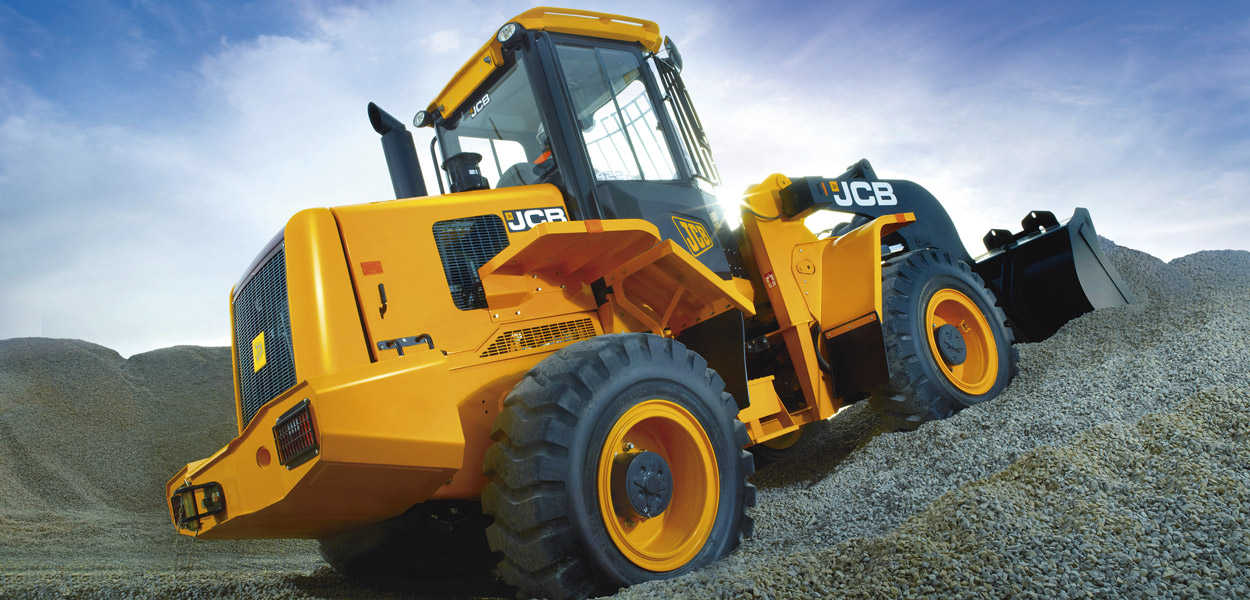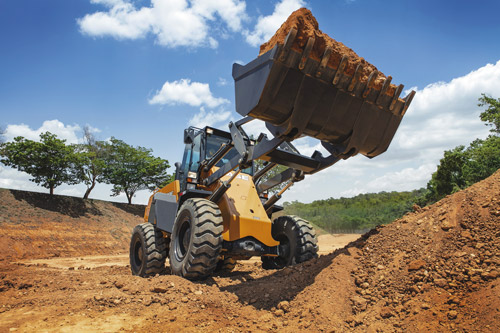LOADERS
Care in selection
Criteria when selecting equipment involve considerations about application details including environment, consumption, cycles and production flow

Selecting the right loader for each type of operation may not be the most complicated of all tasks, but it requires some care. Foremost it is fundamental to know application, working place, load dumping height, productive demand and necessity of machine management. Type, quantity and density of the material to be handled, distance between loading and unloading points, bucket filling factor, operation with more than one type of tool and features of the terrain and of the truck (or other equipment) to be loaded are also points to be considered.
We may see that there are several aspects involved. Therefore, let us see one by one. According to Eduardo Paparotto, sales representative from SEM, a good choice has to consider at first the material to be handled (loose or cohesive) and the environment where the machine will work, including the restrictions of space (wide or confined). “It is also necessary to observe the parameters of the typical features of the application, such as expected fuel consumption, volume of handled material, working cycles and production flow, among others”, explains him.
The product manager from JCB in Brazil, Etelson Hauck, gives more details and lists five steps to select the necessary or desired loader for a specific application. The first step is to identify the needed or desired production (normally specified in cu.mt. or tons per hour). The second step involves the definition of the time for each work unit cycle and of how many cycles will be carried out in one hour. “This includes loading and lifting the bucket, changing direction, unloading and returning to the initial position”, explains him. “In addition, it is necessary to add the path traveled by the equipment (if applicable), a time that is obtained directly in the field.”
The third step is to determine the total production needed per cycle time, using both information about hourly production and the established production per cycle. The fourth step is to define the volume of the bucket using the formula: bucket volume is equal to the production per cycle (in volume – cu.mt.) divided by the factor of bucket filling. “In the fifth step, after defined the capacity of the bucket, this capacity has to be multiplied by the specific weight (density) of the material in the working condition”, says Hauck. “The result is the operating load.”
DIFFERENTIATION
The selection of the equipment that is more appropriate for a determined work must also consider the existence of two types of machines: utilitarian and for production. The size of each one is obviously among the main differences. “Equipped with bucket or other attachments, the first machines are loaders up to 14 ton, used in a series of different applications that need a few working hours”, explains Pablo Sales, product marketing expert from Case CE. “The second group is built only with bucket and is mostly used for loading and transporting material to attend the production of a determined project with a large number of working hours.”

According to Thomas Spana, sales manager of the construction division from John Deere, production models are designed to work 24 hours per day in tougher regimes. Therefore their components are also designed to achieve high mechanical availability and to ensure that the machine has as few stoppages for maintenance as possible. “In addition, this type is also indicated to work with high-density materials such as rock and ore, which overload the structure of the equipment if compared to lighter materials such as earth or limestone”, says him.
Another point to be considered for a safe and productive operation is the tipping load, used to define the bucket capacity. “This reference is determined by the equipment manufacturer for each model”, explains Mateus Zerbinati, sales engineer from Komatsu. “But the definition of bucket capacity is based on the operating load, which results from the application of a 50-percent safety factor on the tipping load. This factor is quite important to ensure safe conditions to the operation. The higher the density of the material, the lower will be the bucket capacity.”
Sales, from Case CE, explains that the tipping load that is in the gravity center makes the machine start to tip over the front axle, moving up the rear wheels. “If we know this load we may calculate the rated capacity of the bucket, which is the maximum weight that the equipment may transport with no risk of tipping”, says him.
In other words, the rated load is equal to the articulated tipping load divided by two. “Having the result, we may go on calculating the bucket capacity”, informs him. “Since this capacity depends on the specific weight (density) of the material to be transported, this information has to be inserted in the formula. Therefore, the bucket capacity is the rated load in tons divided by the specific weight of the material (in tons per cu.mt.).”
Pedro Gaspar, product engineer from Liebherr, tries to answer the question more directly. “In a very simplified way that may be applied in most cases, the maximum capacity of a loader bucket is given by its operating load, that cannot be higher than half of the tipping load, as determined by ISO 7546 standard”, says him.

Av. Francisco Matarazzo, 404 Cj. 701/703 Água Branca - CEP 05001-000 São Paulo/SP
Telefone (11) 3662-4159
© Sobratema. A reprodução do conteúdo total ou parcial é autorizada, desde que citada a fonte. Política de privacidade














